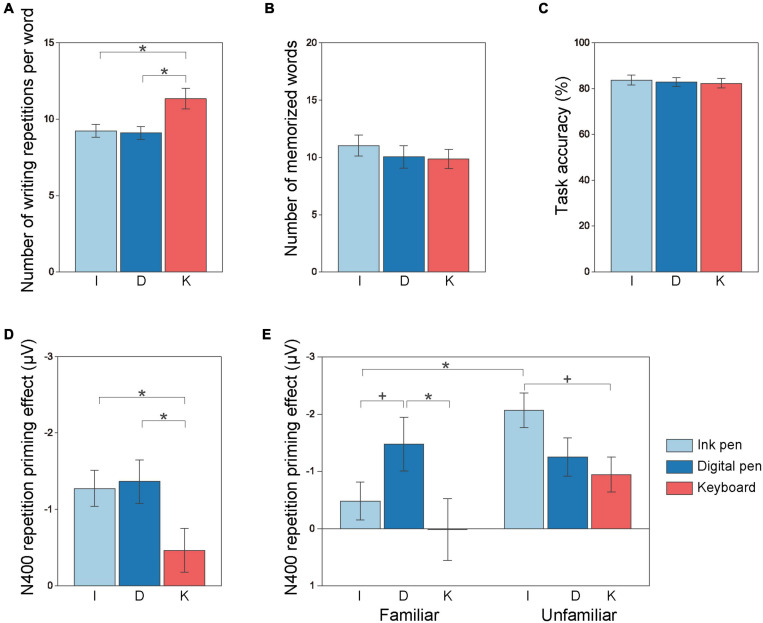FIGURE 3.
Learning effect of the three methods on behavioral and electroencephalographic indices. The number of writing repetitions per word during the learning activity (A) was significantly greater when written with a keyboard (red) compared with when handwritten with an ink pen (light blue) or a digital pen (dark blue), regardless of the group. The numbers of memorized words in the posttest (B) and task accuracy in the EEG experiment (C) were not affected by the writing tool. The repetition priming effect on N400 was greater for words learned using an ink pen or a digital pen than for words learned using a keyboard (D). In addition, a significant interaction between the group and writing tool was found (E). In the familiar group, the repetition priming effect was significantly greater for words learned with a digital pen than for those learned with a keyboard. In the unfamiliar group, the repetition effect was marginally greater for words learned with an ink pen than for those learned with a keyboard. Each bar shows the grand average of the participants. The error bar represents the standard error. *p < 0.05; +p = 0.06.

